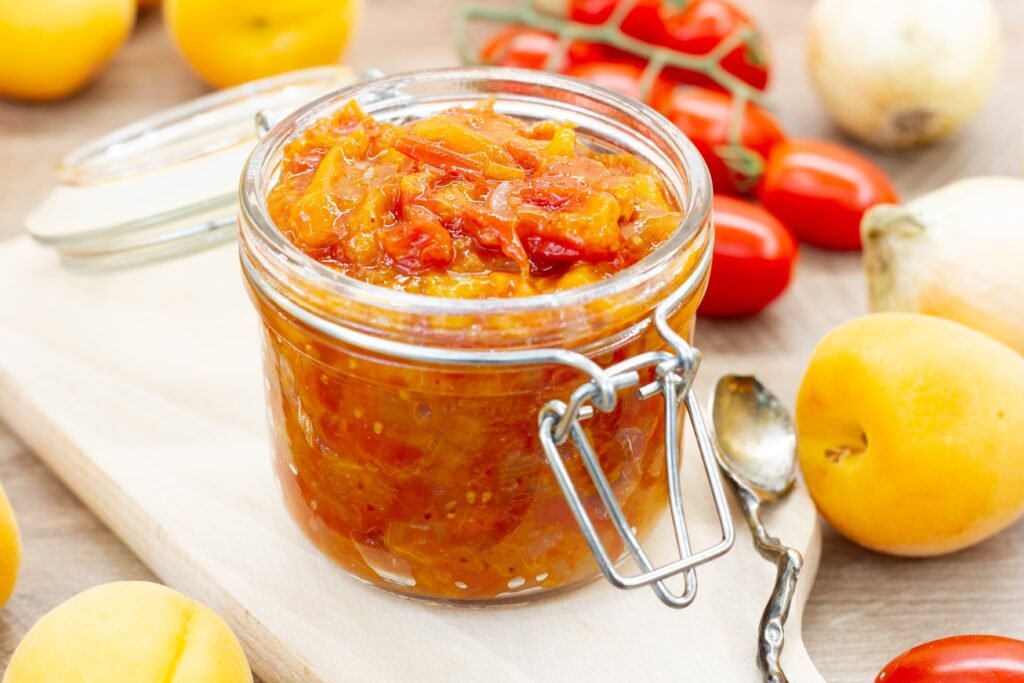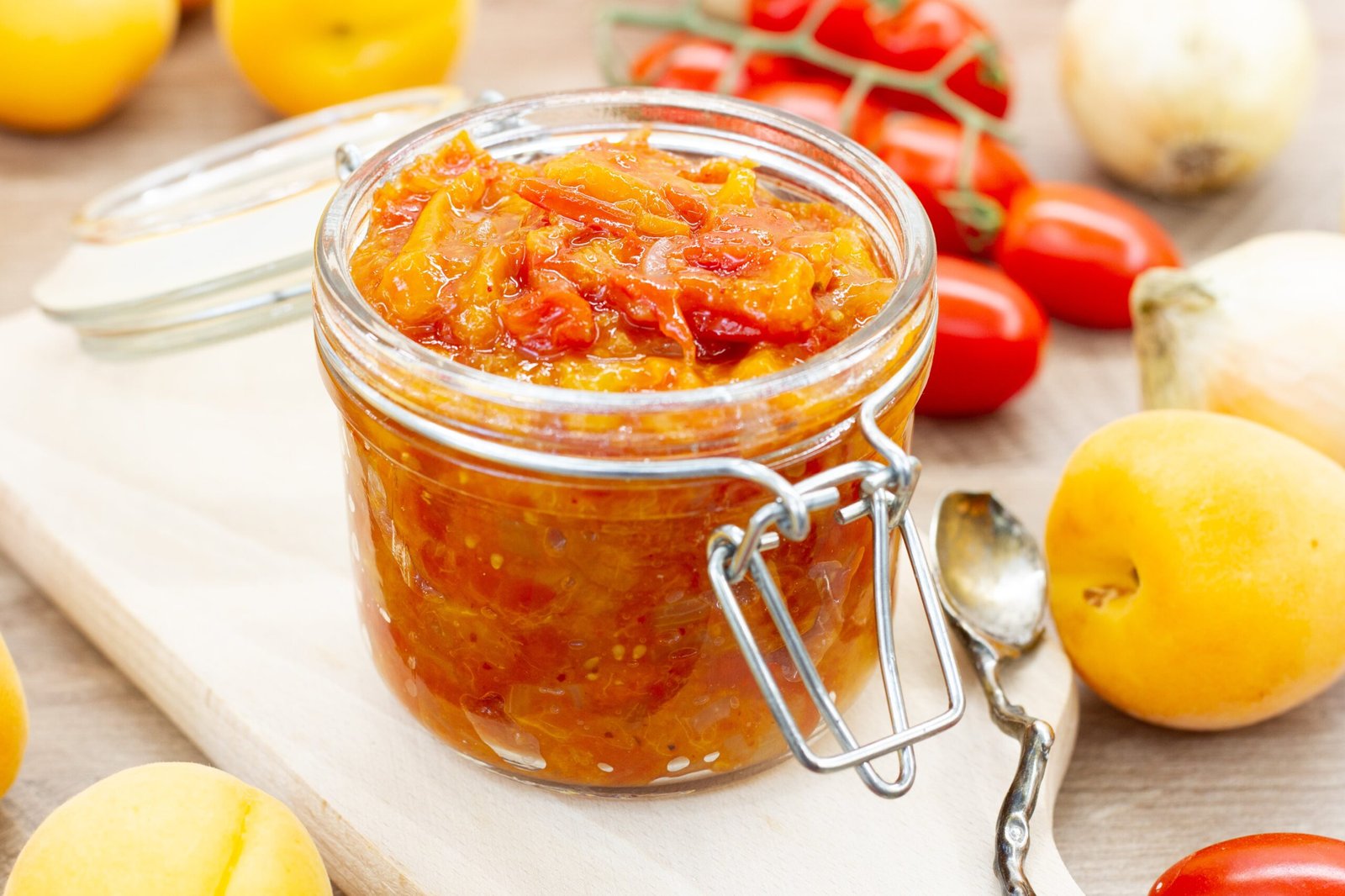Tomato and apricot chutney
Chutney is a cold fruit or vegetable condiment with a jam-like consistency. It often contains vinegar and spices. This dish, originating from India, is now popular in most countries. Thanks to its balanced sweet and sour flavour, it is a phenomenal accompaniment to all kinds of cheeses, meats, and Indian dishes, such as samosas. Popular chutneys include those made with tomatoes, zucchini, plums, onions, and peaches.
The combination of certain vegetables with carefully selected fruits undoubtedly works well in this tasty side dish. Any combination of fruits and vegetables can be combined. One such fruit-vegetable combination is tomato and apricot chutney, as the sweet apricots perfectly balance the sweet-sour flavour of the tomatoes. Ginger and chilli flakes complement the dish.
Find me on Instagram: mecooksblog and Facebook: MeCooksblog
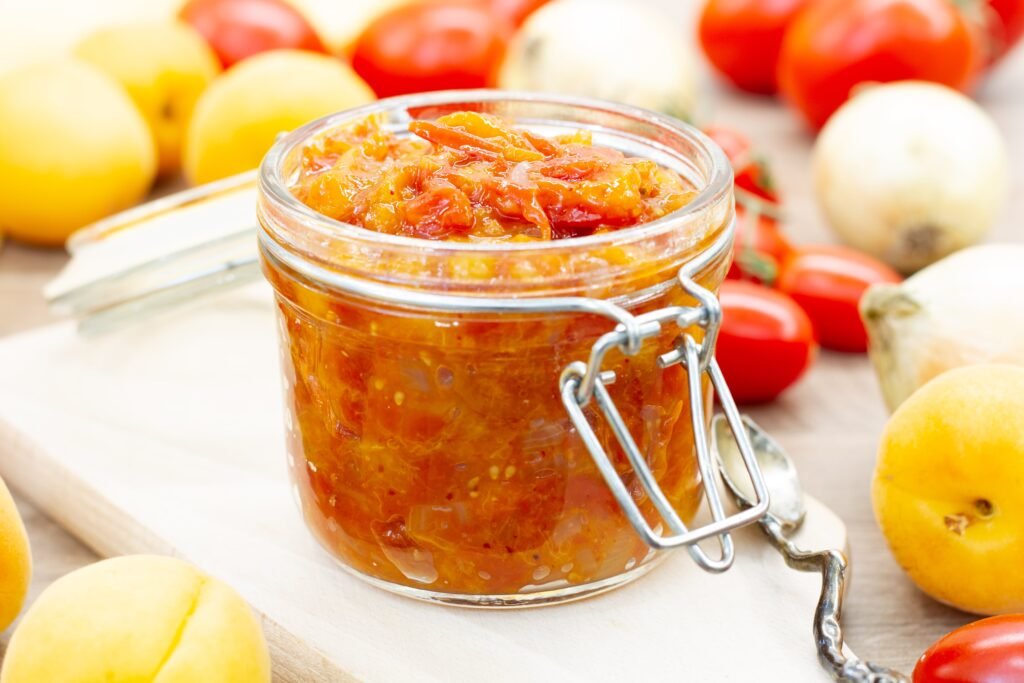
Ingredients for tomato and apricot chutney.
- 250 g cocktail tomatoes
- 50 g onion
- 3 tablespoons of brown sugar
- 250 g apricots
- 1/2 teaspoon of chilli flakes
- 1/4 teaspoon of grated ginger
- 4 tablespoons of apple cider vinegar
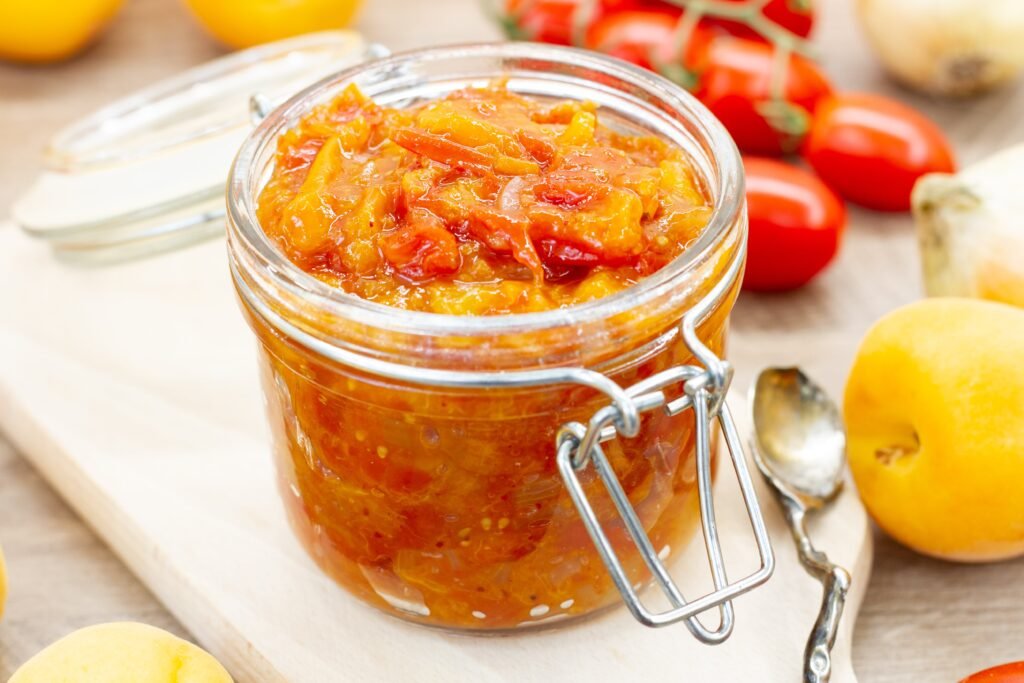
How to make tomato and apricot chutney.
Cut the washed and dried apricots in half lengthwise, remove the pits, and then cut the fruit into small pieces. Cut the peeled onion into small cubes, and cut the washed and pat-dried tomatoes into smaller pieces or cubes.
Place the chopped tomatoes, apricots, grated ginger, brown sugar, onion, chilli flakes, and apple cider vinegar in a pot. Bring to a boil, reduce the heat to low and simmer, stirring frequently, for about an hour, or until the mixture thickens and the ingredients are soft. Let the chutney cool and, once cold, transfer it to a jar. Store in the refrigerator for up to 3-4 days.
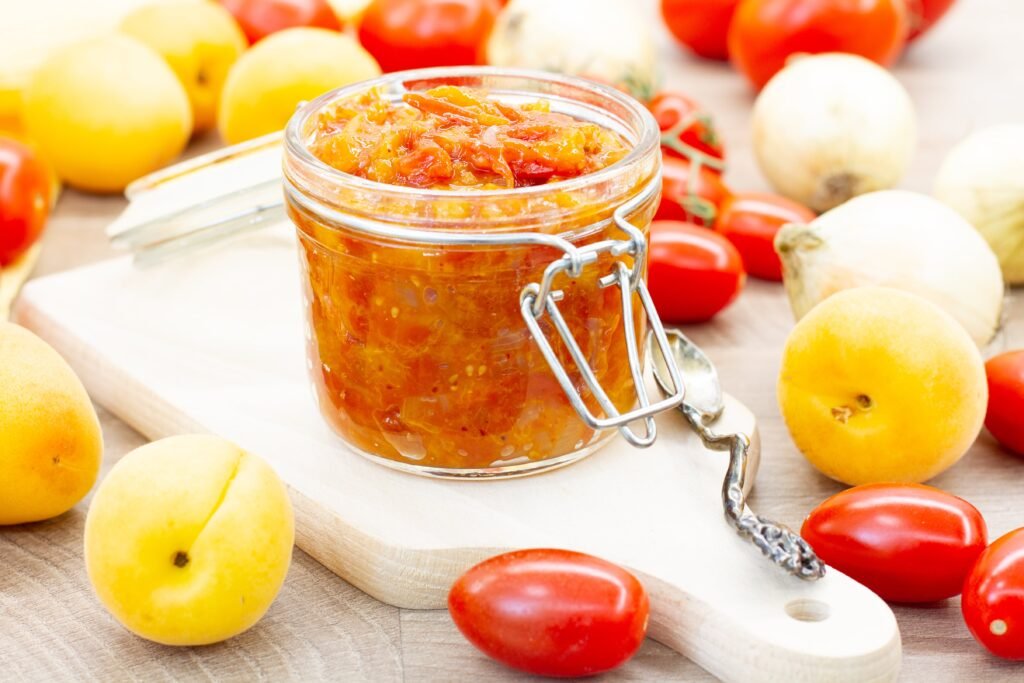
Good to know when making tomato and apricot chutney.
After preparing the chutney, let it cool, then transfer it to a bowl or jar and store it in the refrigerator for up to a few days. If you want to enjoy the flavour of the chutney throughout the year, pasteurise it after placing it in a tightly sealed jar. If you decide to pasteurise, do not let the chutney cool; instead, transfer it to the jar while still hot. Of course, pasteurise in well-washed, thoroughly dried jars with tightly sealed lids. You can pasteurise in a pot of water or in the oven.
You can replace the apricots with peaches or nectarines. As for the tomatoes, the choice is yours; they don’t necessarily have to be cherry tomatoes.
Do you like chutney? If so, try our recipe for Zucchini Chutney.
